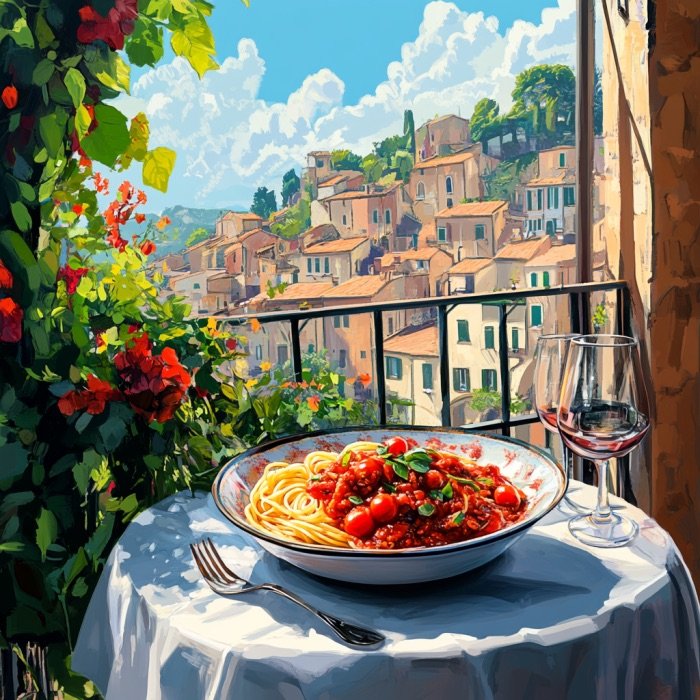How to Pasta
“Thank you for your request but the restaurant has the day off today”.
I smiled and laughed gently out loud.
After the failed attempt to book a restaurant, I decided to just walk into town to find a spot for a late lunch. To my surprise - nothing was open.
Here I was, in the midst of the Italian summer, during peak tourist season and everything was closed. I was surprised.
Across Southern Europe, the culture to prioritize the passion for summer over profits comes through loud and clear. Much of the continent shuts down for business in August when everyone takes extended summer holidays.
In most parts of the world, I’m used to a culture where the priority is to maximize profits. Businesses would be open no matter what, and they’d find people to work.
It all works somehow though in Europe, even if it appears less optimal to me given my North American upbringing.
That evening, we ended up at a local Italian woman’s tiny third floor one bedroom apartment for dinner.
We would be cooking dinner.
It was a cooking class, in someone’s home. On the menu was two types of pasta, bruschetta and my favourite, tiramisu.
As we began cooking, we began chatting and learned more about her story. By the look of her, we wouldn’t have guessed that she had grandchildren.
We were cooking in the same home she was born in. The once family home spread across three floors had been in her family for generations, and now had been split into no less than six apartments. Her sister lived next door. Her nephew is on the floor beneath. And so on.
I was struck by the simplicity and warmth of the experience. The aroma of fresh basil, tomatoes, and garlic filled the small kitchen, mingling with laughter and stories of the past. It was a reminder for me that sometimes, the best moments are the simplest ones, grounded in tradition and shared with others.
As we kneaded the dough and stirred the fresh pasta sauce, I couldn't help but think about the slow pace of life here. It's a stark contrast to the hustle and bustle I’m used to. In that small kitchen, I found a profound appreciation for the art of taking one's time.
Making pasta from scratch takes patience and strength. Our pasta wasn't just a meal though; it felt like a ritual, a celebration of heritage and community.
Our host told us about how she would make pasta with her grandmother, learning the secrets passed down through generations. It wasn't just about cooking for her; it was about connection—connecting with the past, with loved ones, and with oneself.
In North America, where efficiency often trumps all else, this leisurely approach felt almost rebellious. But here, it is a way of life. It made me realize how much I miss out on my rush to get things done. Ironically, I am often in a rush for the fear of missing out. But when rushing, I end up missing.
When the meal was finally ready, we sat down together at a small table overlooking the charming village below. The food was incredible, but what stood out even more to me was the sense of fulfillment we all felt.
We had created something beautiful together, with our own hands, and it tasted of more than just tomatoes and garlic. It tasted of history, love, and patience.
That night, as we walked back to our hotel, I felt a deep sense of gratitude. Not just for the delicious food or the wonderful company, but for the reminders I had received. Sometimes, it’s important to slow down, to savor each moment, and to understand that the process is just as important as the result. If not more important.
In a world that often feels like it's moving fast, there's a quiet joy in embracing a slower pace, in finding meaning in the mundane, and in recognizing that sometimes, the best things in life are the simplest.
And that is how I learned to pasta.



